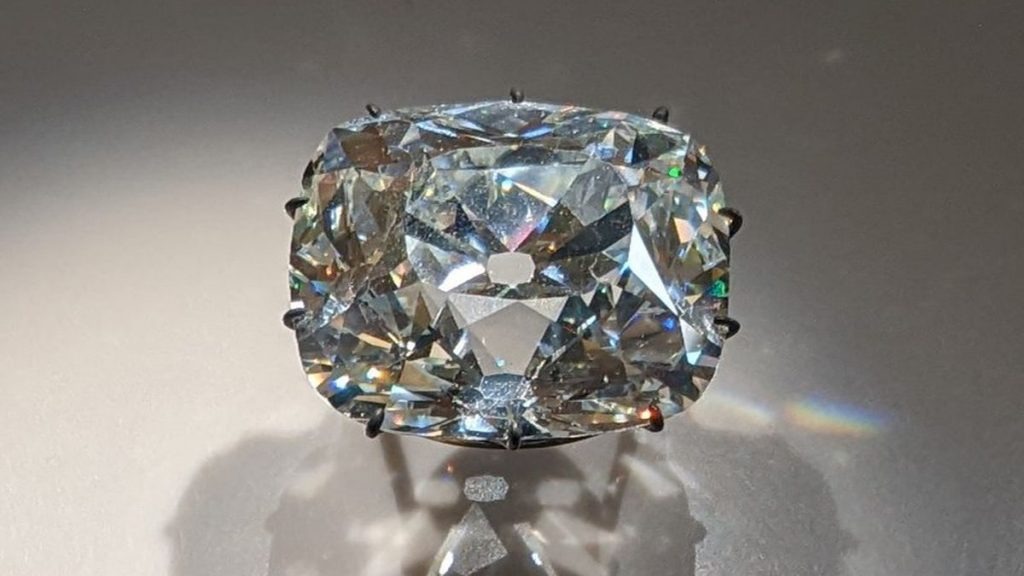The recent Louvre heist in Paris has again brought the world’s attention to one of the world’s most famous gems – the Regent Diamond. The thieves curiously bypassed the “cursed” diamond, leaving the priceless gem untouched, sparing its centuries-old legacy from further risk. Now safe in the Louvre, the story of the diamond begins in 17th-century India, in the fabled Kollur mines along the Krishna River in present-day Andhra Pradesh.
As told by legend and recorded history, the diamond was unearthed by a slave miner during the 1687 Golconda siege by Emperor Aurangzeb.
The slave concealed the stone in a pretended wound in his leg to avoid discovery. His so-called attempt at freedom was, however, betrayed – the English sea captain killed him and sold the gem to Indian merchant Jamchand.
“The early history of the diamond is one of greed and deceit – a single gem which changed hands stained by ambition,” – Joan Y. Dickinson, The Book of Diamonds (1965)
FROM MADRAS TO LONDON: THE PITT YEARS
In 1701, Thomas Pitt, Fort St. George Governor (Madras), met the diamond via Jamchand. Pitt described it in a letter to his agent in London as “of excellent crystalline water without any fowles” and weighing 426 carats.
He bought it for 48,000 pagodas, which was a huge amount at that time.
The stone was secretly shipped to England, hidden in the heel of Pitt’s son’s shoe on the Loyal Cooke. London cutter Harris spent almost two years crafting it into a 141-carat cushion brilliant, the cutting alone costing £5,000 – an exorbitant amount in early 18th-century gemcraft.
Whispers of Pitt’s perfidy soon spread. Satirist Alexander Pope joked famously of him in his Moral Essays, saying:
“Dead asleep and naked as an Indian lay,
An honest agent stole a gem away;
He pawned it to the Knight, the Knight had sense,
So retained the diamond, and the thief was bit.”
Historian Dale Perelman, in The Regent (2016), observed that this incident “sealed the Pitt Diamond’s reputation as a treasure sullied by colonial greed and moral complexity.”
THE FRENCH REGENT
After its failure to sell in England, Pitt sold the diamond in 1717 to Philippe II, Duke of Orlans, Regent of France, for £135,000 – about £26 million in today’s money. It was re-named Le Rgent and joined the French Crown Jewels.
“The Regent sparkled on three crowns – of Louis XV, Louis XVI, and Charles X’ 0 and once sat on Marie Antoinette’s hat,” writes Ann Wardlaw, Diamond Pitt.
The gem rode out the French Revolution, when the Crown Jewels were pillaged in 1792. It was subsequently discovered hidden in a Paris attic and pledged by the revolutionary state to fund its wars.
Napoleon Bonaparte purchased it in 1801 and had it set in the blade of his ceremonial sword, made by the goldsmith Marie-tienne Nitot.
EPMIRE, EXILE, AND LEGACY
After Napoleon’s downfall, his wife Marie Louise of Austria also took the gem to Vienna, where it stayed until her father brought it back to France. It went on to adorn the crowns of Louis XVIII, Charles X, and Napoleon III.
Since 1887, the Regent Diamond has been on display at the Louvre Museum, mounted in a Greek-type diadem created for Empress Eugnie.
International Gem Society gemologists call it “one of the purest diamonds ever cut, with flawless clarity and historical significance unparalleled among royal gems.”
A JEWEL OF POWER AND BETRAYAL
141 carat and worth more than US$60 million, the Regent is a silent observer to centuries of conquest, commerce, and revolution.
From the depths of an Indian earth to the vaults of French monarchy, its journey is larger – of empire, ambition, and mankind’s never-ending quest to own what shines.
– Ends










